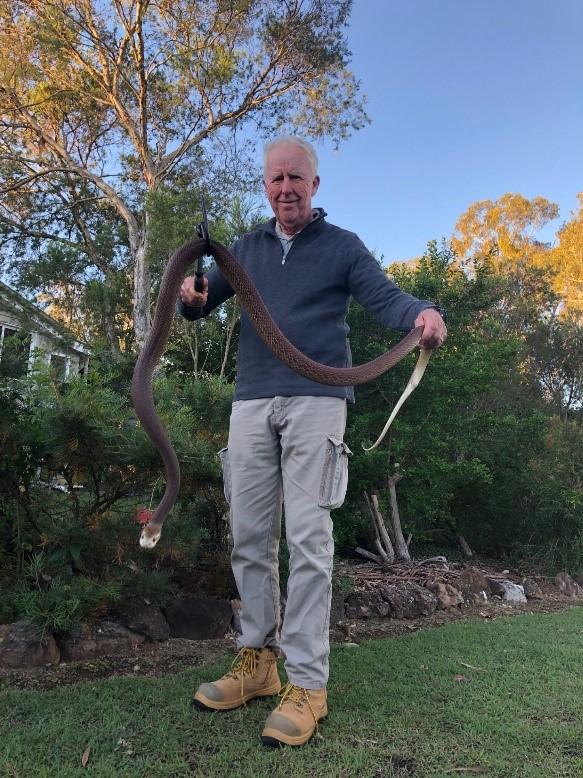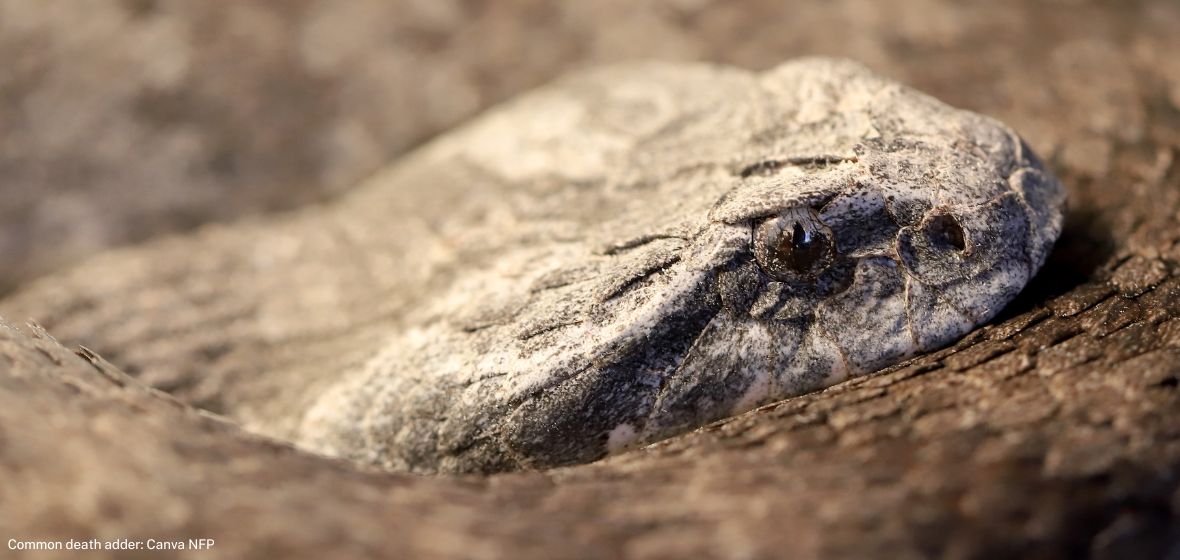25/08/2023
Each year on 7 September, National Threatened Species Day is observed, dedicated to honouring nearly 2000 endangered Australian plant and animal species. It marks the day the last Tasmanian tiger (thylacine) died in captivity.
In a country filled with diverse creatures, few capture our attention and evoke fear like snakes. As the weather warms during September, they are especially on our minds as they emerge from a dormant state called brumation.
Venomous and non-venomous snakes of Queensland
Approximately 120 snake species reside in Queensland. 65% are venomous, primarily belonging to front-fanged (elapids) and some rear-fanged (colubrids) snake groups.
Elapids include sea snakes and land snakes, such as the highly venomous taipan, brown snake, and king brown snake. Some colubrids, such as the brown tree snake, produce weak venom but pose minimal danger. Certain colubrids lack venom and fangs, while the ten python species in Queensland are non-venomous.1
Endangered snake species in Queensland face multiple threats
In Queensland, there are nine species of rare or threatened snakes. These include:
- the common death adder (Acanthophis antarcticus) — listed as vulnerable under the Queensland Nature Conservation Act 1992
- the Fassifern blind snake (Anilios insperatus) — listed as critically endangered under the Queensland Nature Conservation Act 1992.2
Terrestrial snakes face various threats. These range from invasive predators such as feral cats and foxes to habitat loss due to urbanisation, agriculture, bushfires and climate change. Snake species living in areas rapidly transformed into farmland, like the Brigalow woodlands in central Queensland, are especially at risk.
Wildlife Queensland member explores the world of venomous Australian snakes
Wildlife Queensland Bayside Branch member, John Reeves, has a deep fascination with snakes. He recently attended an intensive venomous snake handling course led by expert instructors Chris Hay and Dr Christina Zdenek from the Venom Evolution Lab at the University of Queensland.
The course covered various aspects of venomous snakes, from the effects of their venom on humans to the creatures they prey upon. Contrary to popular belief, these animals don’t view humans as prey but use their venom defensively when threatened.
He learned that some snakes possess shorter fangs, like the brown snake with 2-3 mm fangs, so long clothing and boots provide adequate protection. In contrast, the highly venomous taipan boasts 8-14 mm fangs.
John enjoyed the course and now feels more knowledgeable about snake handling, relocation, and conservation.

John Reeves handling a venomous coastal taipan (Oxyuranus scutellatus). Don’t try this at home!
“Let’s throw out the old dogma that a good snake is a dead snake,” says John.
“By embracing a deeper understanding and advocating for their conservation, we can allow these incredible creatures to live their lives as a vital part of the ecosystem.”
What to do if you encounter a snake
- The first thing to do is remain calm. Avoid prodding or irritating the snake — they’re not out to harm you, just going about their business. Snakes are generally not aggressive toward humans unless provoked.
- Accurate identification plays a vital role in assessing potential threats and treatment in the event of a bite. However, distinguishing between a venomous and a non-venomous snake can often be difficult. It’s crucial to remember never to attempt to catch or kill a snake.
- In the case of a venomous bite, seek immediate medical help. Apply a pressure bandage but do not block circulation. If unavailable, tear clothing or any fabric to wrap around the bitten limb. Immobilise the limb with a splint and keep still as movement will encourage the spread of venom through the body.3
- If you see a snake in your house, contact a professional snake catcher to remove it quickly and safely. They will release the snake into a natural habitat away from your home. No one must handle venomous snakes unless they are trained and certified.
As the National Day for Threatened Species approaches, it’s important to acknowledge the vital role snakes play in Queensland’s ecosystem. Through understanding and conservation efforts, we can ensure these remarkable reptiles continue to thrive in their natural habitats.
How you can help Australian wildlife on National Threatened Species Day
- Grow native plants and weed out invasive species.
- Keep cats indoors to prevent native animal deaths; an outdoor cat can kill about 75 animals per year.
- Connect with your local Wildlife Queensland branch for hands-on nature conservation.
- Donate to Wildlife Queensland to help us campaign for robust nature protection laws.
- Frequently asked questions about snakes | Environment | Department of Environment and Science, Queensland (des.qld.gov.au)
- Rare or threatened reptiles of Queensland (Department of Environment and Science) (des.qld.gov.au)
- Snake bites | Environment | Department of Environment and Science, Queensland (des.qld.gov.au)

